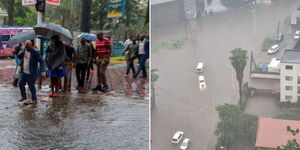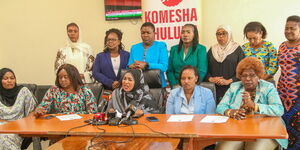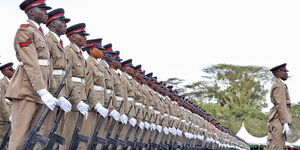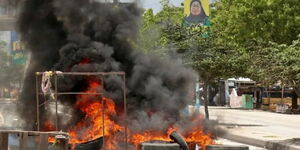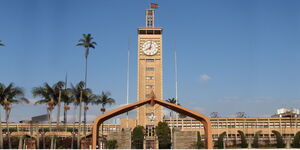Kenya's giraffe population is facing a dire threat as poaching for bushmeat skyrockets, particularly in the counties of Wajir and Garissa.
The Kenya Wildlife Service (KWS) has raised the alarm, warning that if the current rate of giraffe poaching continues, these majestic animals may soon vanish from the region.
Jacob Ilo Orahle, the Senior KWS Warden for Garissa County, revealed that giraffes are being slaughtered weekly, their meat transported to the Daadab Refugee Camp.
"These refugees at Daadab are the people killing our animals. The giraffe meat is going to Daadab," Orahle stated emphatically.
He also pointed out that antelopes are frequently hunted to supplement the refugees’ diets, as they lack domestic animals for milk and meat.
Giraffes have now joined a tragic list of heavily poached species, including dikdiks, buffalos, impalas, wildebeests, bush pigs, warthogs, zebras, gazelles, elands, and hartebeests. The increasing poaching activities have placed enormous pressure on the wildlife populations in the region.
Orahile criticised the United Nations High Commissioner for Refugees (UNHCR) for remaining silent on the escalating poaching crisis. "We are watching. Why?" he questioned, further accusing the UNHCR of allowing refugees too much freedom, which he believes contributes to illegal poaching, businesses, and crime.
The influx of refugees, primarily from Somalia, into the Daadab complex has intensified the strain on local wildlife.
Jacob Ilo Orahle, the Senior KWS Warden for Garissa County, noted that the refugees resort to hunting wildlife due to a lack of domestic livestock. "We are having an increase in poaching in Garissa and Wajir counties because of the presence of refugees. They go for these wildlife because they don't have domestic animals to rely on for meat and milk," Orahle explained.
Giraffes, with their considerable size and substantial meat yield, have become prime targets for poachers. "Giraffes are the most targeted because of their body size. It has more meat which the poachers sell within the refugee camp," Orahle added.
The escalation of poaching in Garissa and Wajir counties has been attributed to a combination of factors, including the absence of domestic animals and certain cultural beliefs.
Locals, driven by necessity and tradition, have increasingly turned to hunting wildlife for sustenance. Among the most affected species are giraffes and antelopes, targeted for their meat.
The situation reached a critical point when police from the Dagahaley Refugee Camp apprehended four men on Tuesday, caught red-handed with a freshly killed giraffe in Kumahumato village within the Daadab Refugee Complex.
Orahle disclosed that such incidents are becoming alarmingly frequent. "We are getting reports of giraffes being killed every week in areas near the refugee camp. We are carrying out public awareness to sensitise them on the importance of wildlife," he remarked.
Despite local claims linking poaching to cultural beliefs, particularly that consuming giraffe meat enhances sexual performance, Orahle dismissed these as baseless.
"We have people talking of having improved sexual desire when they eat the giraffe meat. This is not true. These people are only killing giraffes for meat and nothing else," he asserted.




